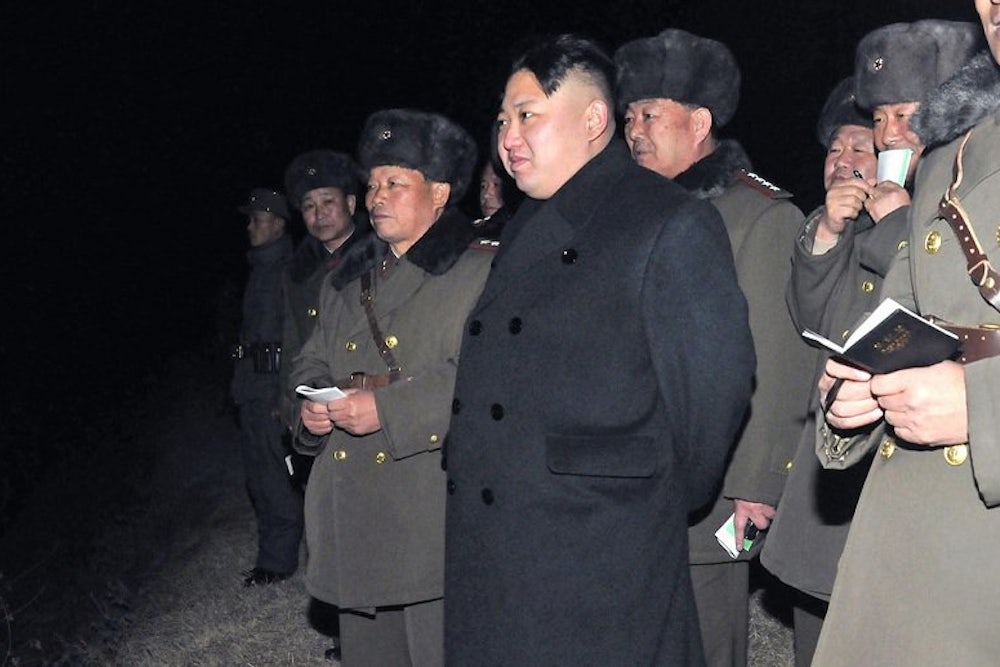North Korea, in advance of a unanimous United Nations Security Council vote to sanction the country for last month's underground nuclear weapons test, today threatened to pre-emptively nuke Washington. Pyongyang has long been known for its provocations, but this one is scary enough to warrant asking: Could they pull it off?
The Stalinist state doesn't have that capability—yet. North Korea has built a long-range ballistic missile, the Taepeodong 2 (TD-2), which could hit the West Coast of the United States. That is, if it worked. The last TD-2 test was in 2006; it failed in 42 seconds. North Korea's longest-range ballistic missile that works, the Musudan, has a range of only 2,500 miles—not nearly far enough to hit the continental United States, some 5,600 miles away, or even Hawaii, 4,800 miles away.
The same month that the vaunted TD-2 disintegrated over the Sea of Japan, the United Nations passed a resolution prohibiting North Korea from flight-testing ballistic missiles, giving the hermit kingdom a way to avoid further embarrassment. So North Korea began testing a non-military rocket capability based on TD-2 technology—the Unha rockets. These tests haven't always gone well, but in December an Unha-3 successfully placed a satellite into orbit. In theory, a ballistic missile based on the Unha rocket could hit the western United States, but not Washington.
The ability to launch a satellite into orbit puts North Korea close to an intercontinental ballistic missile, but significant technological barriers remain. After all, an ICBM must do more than get into space—it has to return to earth and strike a target. That requires a miniaturized nuclear warhead, a reentry vehicle capable of surviving a fiery return to the Earth's atmosphere, and a guidance system capable of targeting specific cities thousands of miles away. North Korea hasn't yet demonstrated any of these capabilities.
It is difficult to predict when North Korea might have the capability to nuke the U.S. Not only are North Korea's existing capabilities unclear, but so is their ability to improve them. Former Defense Secretary Robert Gates suggested that North Korea might be able to strike the continental United States by 2015 or 2016. More recently, General Burwell Bell, former commander of U.S. forces in South Korea, estimated that North Korea was five to seven years from ICBM capability. At that point, they might only be able to reach the West Coast, sparing the capital from fire and brimstone.
But San Francisco and Seattle needn't panic, as there would be further hurdles to a successful strike. North Korea's Unha-3 is a liquid-fuel rocket. Since liquid fuel is corrosive and can't be stored for long periods inside the rocket, it needs to be fueled prior to launch—potentially giving U.S. warning of an attack and the opportunity to destroy the rocket before launch. Heavy liquid-fuel rockets can't be moved either, preventing North Korea from relocating a missile to evade a preemptive strike.
Teddy Roosevelt once said that the United States should "speak softly and carry a big stick." North Korea apparently has resolved on a different approach: Speak loudly and carry a small stick, or perhaps no stick at all. So breathe easy, Washington. North Korea's just talking crazy.
